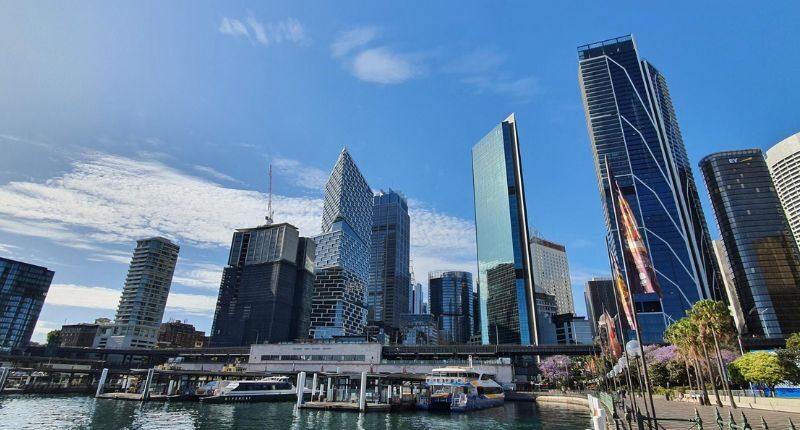
- Sydney was the only Australian city to make the top 30
- The latest analysis from Savills is for the period of Q4 2022
- ESG compliance is driving a new trend in office leasing
The latest Savills Prime Office Costs (SPOC) analysis for Q4 2022 has ranked Sydney and Singapore in the world’s top 20 most expensive places for office space.
It comes as the Asia Pacific saw minimal declines in incentives, Savills said: “… the regional average change [is] hovering at -0.5% for the year.”
World’s 30 most expensive office spaces
- London (West End)
- Hong Kong
- New York (Midtown)
- Tokyo
- London (City)
- Singapore
- Beijing
- Shanghai
- Delhi
- San Francisco
- Dubai
- Paris
- New York (Downtown)
- Seoul
- Los Angeles (Westside)
- Shenzhen
- Dublin
- Mumbai
- Ho Chi Minh City
- Sydney
- Washington DC
- Chicago
- Toronto
- Madrid
- Guangzhou
- Amsterdam
- Berlin
- Houston
- Frankfurt
- Kuala Lumpur
Source: Savills Research Global Cost Rankings and Trends from Previous Quarter, Q4 2022. Full details are at the end of the article.
The results show London’s famed West End ranked as the most expensive city for office occupancy, with other major metropolises unsurprisingly making up the remainder of the top five: Hong Kong, New York, Tokyo, and London (City).
Closer to home, Singapore was ranked sixth, while ASEAN neighbours Ho Chi Minh city ranked 19th and Kuala Lumpur ranked 30th.
The report found that landlord incentives to occupiers across the world have declined by one per cent over the last year. A severe shortage in ‘green’ office space may be one reason behind the reduced incentives.
Breaking it down to regions, Savills found that Europe, Middle East, and Africa (EMEA) saw the largest drop in incentives, with an annual fall of five per cent. The report noted this was driven by decrease in major gateway cities such as Paris, London, and Dublin.
Closer to home, incentives fell by 0.5%, and North America saw an average increase of two per cent, driven by San Francisco – the report noted the city is “… working to retain and attract occupiers in the face of large-scale shifts within the tech industry.”
The report forecasts prime rental growths of one per cent for the Asia Pacific, two per cent for EMEA, and zero per cent for North America.
Alan Cheong, Executive Head of Research and Consultancy said, “With the need for tenants to move to premium offices to comply with ESG mandates, inflation working its way through the service charge component, and the constant flow of family offices setting up here [Singapore], we may potentially see our basket of offices eke out a 2% YoY increase in 2023.”
Over the past year, Savills Research reports that rent increases for prime offices averaged 3% globally, as rising costs were relatively confounded by declining incentives and landlord contributions towards fit-outs. Net effective costs to occupiers – the cost inclusive of rent, fit-out, and any incentives – were up only 4% year-on-year, considerably lower than inflation and increasing energy and labour costs. However, it should be noted that despite the increase in gross rents, the market continues to be cautious.
Matthew Fitzgerald, Director of Savills EMEA Tenant Advisory Team, said: “Despite the uncertainty in the macro-economic environment, the fundamental supply/demand imbalance of prime office space in many key cities has held rents. Incentives have largely fallen, and rents are actually forecast to increase over the next 12 months, but the inflationary impact on fit-out and service charge costs is now affecting occupiers. The situation varies across cities, of course, depending on the industry types associated with that city, but an almost-universal rush for ESG compliance with multinational companies considering only ‘green rated’ buildings will likely to continue to push up pricing for the high-quality, certified assets.”
Marcus Loo, CEO of Savills Singapore adds, “The office market rental trend is undergoing a transition now. With macro-economic uncertainties and inflation working its way through the service charge component, the logical deduction is for net rents to turn softer. However, the tight supply of good quality ‘green’ buildings has somewhat buffeted this impact. We remain cautious as the job market continues to experience layoffs and occupiers ‘right-sizing’ against the tide of economic concerns and rising fit-out cost and service charges.”
The full details for Q4 2022
Methodology
The figures in the SPOC Index were calculated through annual gross rent (face rent + taxes + service charges), amortised capital expenditure (landlord’s contribution to the fit-out costs), and amortised incentives (any rent-free period).







